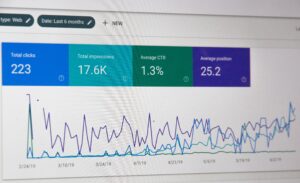
How to align PR and SEO to Boost your Brand
A column by Kathryn Byberg, Managing Director Little Leaf Agency (littleleaf.agency)
A solid digital marketing strategy is vital for direct-to-consumer brands and with the market becoming ever more saturated, it’s easy for brands to get lost, which is why it’s more important than ever to have not only an SEO (Search Engine Optimisation) strategy but one that is aligned with PR.
Without an effective SEO strategy in place, you can find yourself shouting into the void. Coverage secured in top-tier media may not bring the traffic or the sales you expected, but with clever SEO-driven PR, secured coverage can show up in the right searches, be seen by the right people and help to boost the ranking of a website.
If PR and SEO teams work in unison, and content is aligned, it can help secure strong coverage that not only brings qualified referral traffic with a higher chance of conversion but can also increase SEO and generate more organic qualified traffic too.
Here are a few tips that have led Little Leaf Agency to increase our client’s organic traffic after gaining coverage on some high-ranking websites.

Keyword Audits
Before any piece of content is written, whether it’s a blog, a social caption or a press release, consider the purpose of the content and how the consumer might find it. What will people search for? If, for example, the content is focusing on a product launch of a new bullet vibrator, then the search terms could be along the lines of ‘best bullet vibrator’ or ‘sex toy for beginners’. The same logic applies to press releases and pitches that can get picked up by mainstream media.
You can use free tools such as Google Trends, or Answer The Public to gather an idea of what people are searching for and then build a list of key terms to include in your content.
You will want to split the content into short-tail and long-tail terms. Short-tail will be keywords such as ‘bullet vibrator’ and ‘sustainable vibrator’ and long-tail will be phrases, such as ‘What’s the most sustainable vibrator on the market’ or ‘What’s the difference between a bullet vibrator and a rabbit vibrator’?
A lot of brands will have separate SEO, content and PR teams, so it’s important to make sure your SEO team works in tandem with the others and sends them keyword briefs to be included in any content they draft including press releases.
Hyperlinks
Hyperlinks are important in press releases and should be placed on the search term you want to rank for. You may land coverage in the highest-ranking publication globally, however, with no backlinks, you will miss out on traffic, keyword ranking and a boost to your website’s domain authority.
If you mention a bullet vibrator in the release but place the link on the name of the product instead of the term “best bullet vibrator”, then you could also miss out on ranking for this term. Additionally it’s important not to over-saturate your copy with hyperlinks. This will end up having the opposite effect and will dilute the SEO boost you get back to your website. If you want the press release to be impactful, carefully select and link the items you want to rank for and stick to having a couple of strong backlinks.

Domain Authority
One of the aims of PR is not to just secure coverage, but to secure coverage with relevant backlinks to websites that have a high domain authority (DA).
Domain Authority is the relevance a page has to the search engine. The higher domain authority that a page has, the better it is. In simple terms, this means that it will sit higher in the search results, in other words the search engine will favour this page. The higher the domain authority a page has, the bigger boost your own website will get from cleverly placed backlinks. You can use an SEO suite such as Moz to check not only the highest-ranking keywords but also the websites with the highest domain authority.
Generally, the higher the DA, the more traffic these sites tend to get, so not only do you get an SEO boost helping to increase your website rank in internet searches, but you also get a higher chance of directing more referral traffic back to your site.
When measuring the success of your press coverage, a key metric to note is not just how much coverage you secure, and what the UVM of the website is, but also the DA. If these are both high, it will also build your domain authority giving you a nice SEO boost. This can take time and patience, but with the right SEO and PR team working together, you can build strong coverage in earned media channels that will help grow not only the referral traffic to your site but also the organic traffic.




